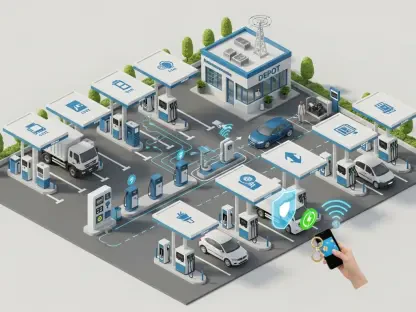The power requirements of data centers continue to soar, driven by the omnipresent growth of artificial intelligence and cloud computing. Traditionally, large investor-owned utilities have been the primary providers for these data-hungry tech hubs. However, a quiet revolution seems to be stirring in the energy sector. Smaller, not-for-profit public utilities are beginning to attract attention as viable partners for tech giants. But can these smaller utilities meet the increasing demand for energy while maintaining the balance between growth and integrity?
Exploring the New Allies in Data Centers
Data centers are becoming instrumental in supporting AI advancements, requiring reliable and abundant energy sources. Google and Amazon Web Services (AWS), leading players in the tech industry, are continually seeking strategic energy solutions. Increasingly, they find smaller utilities appealing due to the promise of affordability, reliability, and self-governance. These utilities offer an enticing combination of benefits that align with both fiscal prudence and a desire for self-sufficient energy provisions—a trend that reflects broader shifts in infrastructure and resource management.
Transforming Local Economies Through Strategic Partnerships
The economic landscape of smaller utility regions transforms considerably through partnerships with tech behemoths. Take Northern Wasco County People’s Utility District in Oregon as an example. Its revenue trajectory changed dramatically, with a jump from $32 million in annual revenues to a projected $300 million, bolstered by Google’s substantial investment. Local economies witness substantial growth opportunities, though the rise is not without potential drawbacks. The strain on grid reliability and resource allocation emerges as a critical challenge that utilities must navigate, especially when demand spikes can threaten foundational service commitments.
Weighing the Costs and Benefits: Expert Perspectives
Insights from industry leaders, including the American Public Power Association’s Patricia Taylor and Latif Nurani, highlight the delicate balance between fostering lucrative partnerships and safeguarding ratepayer interests. For instance, Umatilla Electric Cooperative’s experience with AWS illustrates the complexities involved. AWS’s arrival led to short-term spikes in carbon emissions, raising environmental concerns despite long-term plans to transition to renewable energy sources like hydropower. The scenario underscores the imperative of meticulous resource management and the critical evaluation of environmental trade-offs.
Challenges and Strategies in Data Center Collaborations
Utilities are urged to adopt strategies that mitigate risks while embracing growth as data center requests surge. Experts suggest load management techniques, robust contractual agreements, and infrastructure investments to handle new demands efficiently. By maintaining high load factors, employing behind-the-meter resources, and enforcing collateral requirements in contracts, smaller utilities can protect themselves from potential headwinds while facilitating positive outcomes from data center collaborations.
Looking Forward: Adapting to the Energy Landscape
Smaller utilities stand at a crossroads, embracing the potential for transformative growth while facing formidable challenges posed by increased demand and resource management complications. The path ahead involves making informed strategic choices and implementing protective measures that ensure economic and environmental harmony. By staying vigilant and proactive, these utilities can shape a future where data center growth aligns seamlessly with community welfare and sustainability goals, turning potential into tangible progress for all stakeholders involved.









